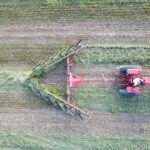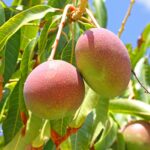Brazil suffers crop losses due to heavy floods

Heavy rains strike Southern Brazil leaving many dead, devastated cities, and ruined crops. Rio Grande do Sul, the largest soybean and sixth largest corn state producer in Brazil, has seen the most devastation by the heavy floods and is currently in a state of emergency.
This is the worst flood to hit the country in more than 80 years, dozens have died and nearly a hundred people are missing and displaced.
According to the State Technical and Extension Service Enterprise (Emater), the floods caused a significant decrease in maize crops and soybeans. The expected reduction in maize mean yield is 37% and a drop of 15.6% in soybean crops. Emater projected a record crop of 22.25 million metric tons.
According to the most recent National Supply Company (CONAB) report, about 17% of corn and 40% of soybean crops in south and center Brazil were still out in the fields on April 28, making it difficult to estimate losses.
Due to the adverse climate, the crop agency lowered projections for the country's soybean and corn production in March by some 2.6 million metric tons to 146.858 million metric tons. The organization will revise the national forecasts on May 14.
Before the heavy rains, CONAB's Rio Grande do Sul soy output was at 21.89 million tons and Emater's had it at 22.25 million.
However, the U.S. Department of Agriculture estimates that the Brazilian soy harvest will be way higher than both local agencies forecasted, at 155 million tons, despite making cuts due to adverse weather.
Fruit losses
Fruit crops in the southern Brazilian region have also suffered due to heavy rain.
Petrolina, a municipality in Pernambuco, has lost 30% of its fruit exports which include grapes and mangoes. Apples have already been harvested in the North, which means the crops were not damaged.
According to Carlo Porro, the CEO of Agricola Famosa, the rains have caused big losses in melon production, some farms in the North lost 20% to 35% of production, and watermelon farms lost even up to 30% of their harvest due to continuous big rains of 100 mm per day.
Apples, grapes, and banana crops might also suffer due to floods and high humidity that are already causing plant disease and might lead to an increase in local prices.
Brazil is the largest soybean producer and exporter in the world, in 2023 Brazilian soybean exports amounted to approximately 53.2 billion U.S. dollars, an increase of around 14% in comparison to the previous year and the highest figure reported in the decade.












































